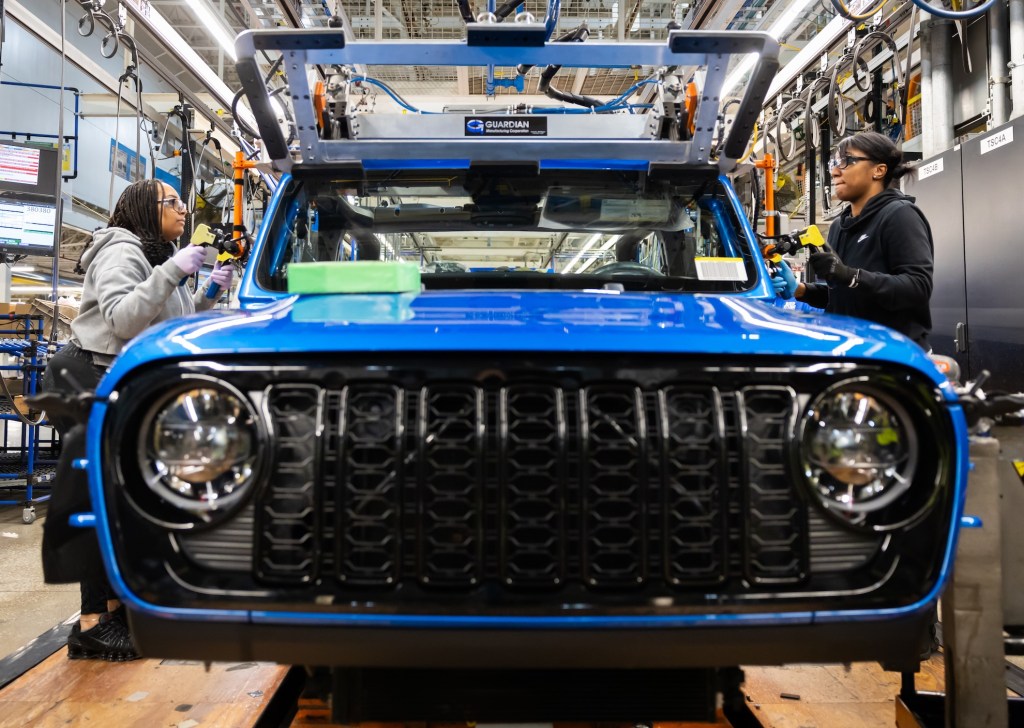Stellantis, the global automotive conglomerate encompassing brands such as Chrysler, Jeep, and Ram, has unveiled a substantial $13 billion investment strategy aimed at enhancing its U.S. manufacturing capabilities over the next four years. This initiative is a pivotal component of the company’s broader revitalization plan under the leadership of its new CEO, Antonio Filosa.
Investment Overview and Job Creation
The investment is earmarked for the development and production of five new vehicles by 2029, with manufacturing facilities in Illinois, Ohio, Michigan, and Indiana set to benefit. A significant portion of the funds will also be allocated to the production of a new four-cylinder engine and the reopening of the Belvidere Assembly Plant in Illinois. This reopening is particularly noteworthy as it will facilitate the expanded production of the Jeep Cherokee and Jeep Compass models for the U.S. market. Collectively, these initiatives are projected to generate over 5,000 new jobs, underscoring Stellantis’ commitment to bolstering the American automotive workforce.
A Notable Shift from Electrification
Contrary to previous multibillion-dollar investment announcements that emphasized electrification, this latest plan marks a strategic pivot. Among the five new vehicles, only one—a range-extended electric vehicle (EV) that combines a battery with a gasoline generator to extend its range—is slated for production. This model will be manufactured at the Warren Truck Assembly Plant in Michigan, with production commencing in 2028. Additionally, the company plans to produce a large, new gasoline-powered SUV at the same facility.
The other forthcoming products include:
– A next-generation Dodge Durango, set to be produced at the Detroit Assembly Complex in 2029.
– A new midsize truck, which will be assembled at the Toledo Assembly Complex in Ohio.
– An all-new four-cylinder engine, designated as the GMET4 EVO, scheduled to enter production in 2026 at the Kokomo, Indiana, factory.
Leadership Perspective
Antonio Filosa, CEO and North America COO of Stellantis, emphasized the strategic importance of this investment. He stated, Accelerating growth in the U.S. has been a top priority since my first day. Success in America is not just good for Stellantis in the U.S.—it makes us stronger everywhere. This statement reflects the company’s broader vision of leveraging the U.S. market as a cornerstone for global strength and competitiveness.
Reevaluation of Electrification Strategy
Over the past year, Stellantis has been reassessing its electrification plans for the U.S. market. In September, the company announced the cancellation of the electrified Jeep Gladiator variant, citing a reassessment of its product strategy. Earlier that month, plans to produce a battery-electric full-size pickup were also shelved. Despite these cancellations, Stellantis has confirmed its intention to proceed with the production of an extended-range Ram 1500 REV, previously known as the Ramcharger.
Contextualizing the Investment
This strategic shift occurs amidst a dynamic landscape in the automotive industry, where manufacturers are grappling with balancing traditional internal combustion engine (ICE) vehicles and the transition to electric vehicles (EVs). Stellantis’ decision to focus a significant portion of its investment on ICE vehicles and range-extended EVs suggests a nuanced approach, potentially aimed at catering to current market demands and infrastructure realities.
Historical Investments in Electrification
It’s important to note that Stellantis has not entirely stepped back from electrification efforts. In October 2023, the company, in partnership with Samsung SDI, announced plans to invest $3.2 billion into a new EV battery plant in Kokomo, Indiana. This facility, expected to begin production in early 2027 with an annual capacity of 34 gigawatt-hours (GWh), represents Stellantis’ sixth battery plant globally and its second in the United States. The total investment for both factories in Kokomo will exceed $6.3 billion and is anticipated to create 2,800 new jobs.
Comparative Industry Movements
Stellantis’ strategic pivot can be contrasted with other industry players. For instance, in May 2022, the company announced a $2.5 billion investment, also in partnership with Samsung SDI, to build a lithium-ion battery plant in Indiana. This project marked Stellantis’ first battery plant in the U.S. and its fifth worldwide, with the site slated to open in 2025 near the company’s existing engine, casting, and transmission plants in Kokomo.
Implications for the U.S. Automotive Market
Stellantis’ latest investment plan underscores a broader trend in the U.S. automotive market, where manufacturers are navigating the complexities of transitioning to electric mobility while maintaining a foothold in traditional vehicle segments. The company’s focus on range-extended EVs and new ICE models suggests a strategy aimed at bridging the gap between current consumer preferences and the anticipated future shift toward electrification.
Conclusion
Stellantis’ $13 billion investment in U.S. manufacturing signifies a strategic recalibration, balancing the development of traditional and electrified vehicles. By focusing on a mix of ICE vehicles and range-extended EVs, the company appears to be positioning itself to meet diverse consumer demands while navigating the evolving automotive landscape. This approach reflects a pragmatic response to current market conditions and infrastructure challenges, even as the industry continues its gradual shift toward full electrification.



